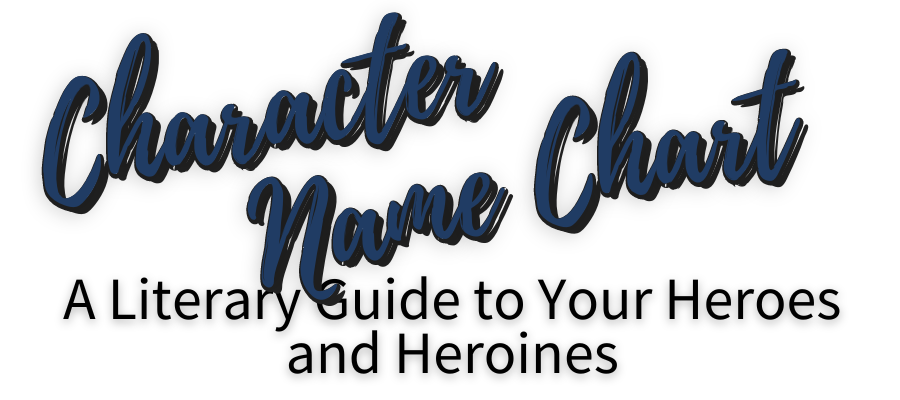
As authors, our characters are like family, and introducing them to our readers is a special moment. One creative way to enhance this introduction is through a Character Name Chart.
This visual tool not only helps you keep track of your characters but also serves as an engaging and educational resource for your readers.
Let’s explore how you can craft and leverage a Character Name Chart to enrich your storytelling.
Crafting Your Character Name Chart
Start by creating a visually appealing chart that includes the names of your characters.
Arrange them in a way that reflects their relationships, importance, or any other relevant criteria. This could be a family tree-style chart or a simple alphabetical arrangement.
To help you get started, get the ready-made template. Like this:

Example:
Chart Title: “Cast of Characters in [Book Title]”
Names listed alphabetically or grouped by relationships.
Visual elements like colors or symbols to denote character traits.
Adding Character Insights
Enhance the educational aspect of your chart by including brief insights about each character. This could be a snippet about their personality, role in the story, or any unique traits. Think of it as a mini character dossier for your readers to explore.
Example:
Character Insight: “Eleanor Grace”
Role: Protagonist’s best friend
Personality: Loyal, witty, and adventurous
Key Traits: Iconic red hair, penchant for solving mysteries
Interactive Digital Versions
Consider creating an interactive digital version of your Character Name Chart. This could be hosted on your author website, allowing readers to hover over or click on each character’s name for more details. It adds a layer of engagement and interactivity to the reading experience.
Example:
Digital Chart Feature: “Meet the Characters”
Clickable links or pop-ups for each character with additional information.
Behind-the-Scenes Stories
Use the Character Name Chart as a gateway to behind-the-scenes stories. Share anecdotes about how you came up with each character’s name, any real-world inspirations, or the significance of their names in the context of your story.
Example:
Story Behind the Name: “Eleanor Grace”
Inspired by a childhood friend named Eleanor, known for her adventurous spirit.
Reader Engagement
Encourage reader engagement by inviting them to explore the Character Name Chart and share their thoughts. Ask questions about their favorite characters, or create polls to determine the most beloved character among your audience.
Example:
*Reader Engagement Prompt: “Who’s your favorite character so far? Share in the comments!”
Conclusion
A Character Name Chart goes beyond being a mere reference tool; it becomes a bridge between the author’s imagination and the reader’s experience.
By offering a visually appealing and insightful guide, you not only educate your readers about your characters but also invite them to forge a deeper connection with the personalities inhabiting your literary world.
So, why not embark on this creative journey? Craft your Character Name Chart and let your readers discover the vibrant personalities that breathe life into your stories.

What to Include on your Character Names Chart
When filling in this chart, think about who your characters are – each of them. And that’s what you fill in the chart with. Here’s what you could include:
- Name (first and last)
- Age
- Ethnicity
- Occupation
- Unique characteristics (soft-hearted, bold, fearless, out-going, etc.)
- Descriptive words (average, immature, nosy, methodical, kind, etc.)
- Type of person (strengths and weaknesses)
While this is not a full list, it is different than the Character Roles Chart. The Character Names Chart is all about who your characters are in the story!
What are some fun ways to enhance your Character Names Chart?
Once you have the basic information filled out in your chart you can make it even more interesting by adding fun facts about each of the characters or even photos of each one! This is definitely not necessary but it’s a nice touch if you want to go above and beyond for your fans and give them something extra special that other authors may not be doing.
It will also help them connect with the characters even more which will only serve to increase their enjoyment of reading your book!
Build Your Own Character Names Chart
Enlighten your readers with a valuable content idea that they will love!
And what’s even better, you can use this chart again and again for each of your books.

What’s Next…
Want a deeper look into how to create content that’s entertaining, educational, engaging, inspiring, and persuasive.
Still wondering about the benefits of offering quality content? Take a look at this article.
Make sure to add the essential content elements to your author platforms!
If you’re ready to take your website to the next level, check out how you can Build Your Own Content Library and pick a content template that fits your readers.
Check out the Ultimate Guide to Building your Content to get tips on how to do-it-yourself!
